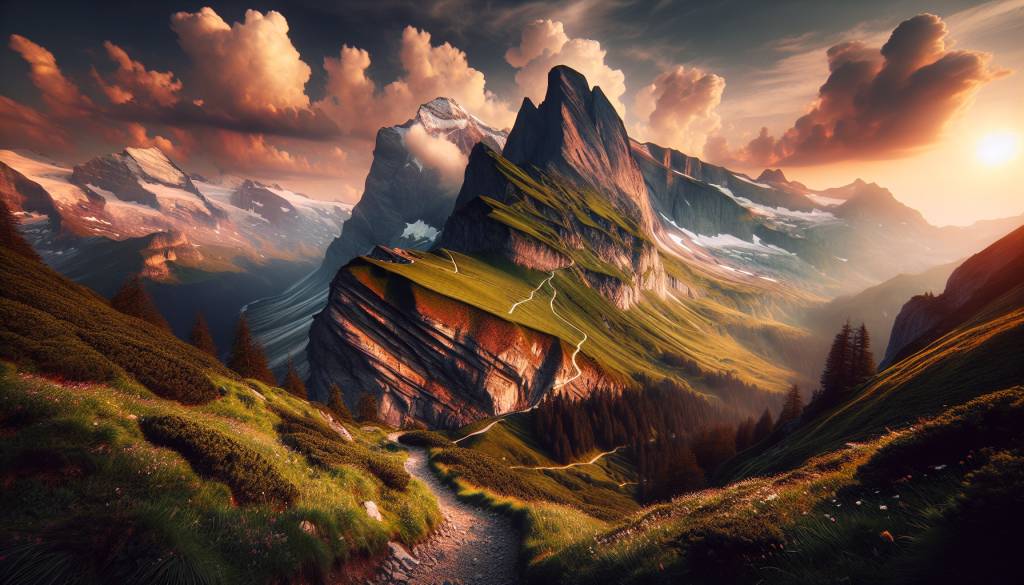Architectural wonders of Moscow: a blend of history and modernity
Red Square: The Historic Heart of Moscow
Red Square is arguably the most famous landmark in Moscow, serving as the historical and cultural heart of the city. A visit to Moscow would be incomplete without a stroll through this iconic square, whose name does not derive from the color red, but from the old Russian word for « beautiful ».
The square is bordered by several architectural marvels. The flamboyant St. Basil’s Cathedral with its colorful onion domes is perhaps the most recognizable structure. Commissioned by Ivan the Terrible in the 16th century, the cathedral is a testament to medieval Russian architecture with its unique and ornate design.
Adjacent to St. Basil’s is the Kremlin, an ancient fortress that has witnessed the rise and fall of tsars, emperors, and Soviet leaders. Touring the Kremlin is like walking through Russian history, from the dazzling cathedrals to the imposing Grand Kremlin Palace. Within its walls, you will also find the Armory Chamber, a treasure trove of Russian regalia, and the Diamond Fund, home to some of the world’s most exquisite gems.
The Bolshoi Theatre: A Cultural Landmark
The Bolshoi Theatre is synonymous with the grandeur and rich cultural heritage of Russia. Opened in 1825, the theatre has hosted some of the most exquisite ballets and operas in the world. The theatre itself is an architectural marvel, with its neoclassical façade featuring impressive columns and a portico topped with a statue of Apollo in a chariot.
Inside, the Bolshoi is just as stunning. The grand chandeliers, gilded moldings, and plush red interiors transport you to a bygone era of opulence and elegance. Watching a performance here is not just a cultural experience; it is a journey into the heart of Russian art and tradition.
Moscow Metro: The Underground Palace
Far more than just a means of getting around, the Moscow Metro is a subterranean showcase of Russian art and architecture. Opened in 1935, the metro stations were designed to be « palaces for the people » and they certainly live up to that promise.
Stations like Komsomolskaya, with its grand chandeliers and mosaics, and Mayakovskaya, with its slender columns and futuristic design, are architectural gems. The entirely modern Park Pobedy station boasts one of the longest escalators in Europe. Exploring the Moscow Metro is like wandering through an underground art gallery, each station narrating a chapter of Russian history and culture.
The Cathedral of Christ the Saviour: Resurrected Grandeur
The Cathedral of Christ the Saviour is a symbol of Moscow’s resilience and revival. Originally completed in the 19th century to commemorate Russia’s victory over Napoleon, the cathedral was demolished in 1931 under Stalin’s orders. However, it was painstakingly rebuilt in the 1990s and now stands as a stunning replica of its former self.
With its gleaming gold domes visible from afar, the cathedral is a commanding presence on the Moscow skyline. The interior is equally magnificent, adorned with intricate frescoes, marble columns, and ornate chandeliers. The Cathedral of Christ the Saviour serves as both a place of worship and a monument to the indomitable spirit of the Russian people.
The State Historical Museum: A Journey Through Time
Occupying a prime spot on Red Square, the striking red-brick façade of the State Historical Museum is hard to miss. This museum offers a comprehensive journey through Russian history, from ancient tribes to modern times.
The building itself is a masterpiece of Russian Revival architecture, complete with turrets and glass domes. Inside, over 4 million artifacts are on display, including ancient manuscripts, stunning jewels, and ornate arms and armor. Each room of the museum is designed to reflect different historical periods, offering visitors a vivid and immersive educational experience.
Sparrow Hills: Panoramic Views and Architectural Brilliance
Sparrow Hills, located on the south-western outskirts of Moscow, provides what is arguably the best panoramic view of the city. The area is also home to the Moscow State University building, one of the « Seven Sisters » – a group of seven Stalinist skyscrapers known for their impressive height and intricate design.
This particular « Sister » is an imposing structure combining elements of Russian Baroque and Gothic styles with Socialist Realist architecture. Its slender central tower, flanked by two lower wings that form a majestic sweep, is often considered one of the most visually arresting sights in Moscow.
The viewing platform at Sparrow Hills is a popular spot for both locals and tourists, offering sweeping vistas of Moscow’s skyline, including the twisting spires of the Moscow City business district and the golden domes of the Kremlin.
Moscow-City: The Modern Marvel
While Moscow is steeped in history, it is also home to several examples of cutting-edge modern architecture. Moscow City, a burgeoning business district, epitomizes the city’s blend of old and new.
Dominated by sleek, glass-clad skyscrapers, Moscow City is a striking contrast to the historic center. The Federation Tower, the tallest building in Europe, soars above the skyline with its asymmetrical design. The twisting Evolution Tower and the futuristic Mercury City Tower are other highlights of this area, exemplifying Moscow’s architectural ambition and modernity.
A visit to Moscow City offers a glimpse into the future of urban architecture and development, providing a fascinating counterpoint to the city’s historic landmarks.
Zaryadye Park: A New Urban Oasis
Created in the 2010s on the site of a former Soviet-era hotel, Zaryadye Park is a testament to Moscow’s commitment to green urban spaces and innovative design. The park is located near the Kremlin and Red Square, making it easily accessible for a leisurely break during a day of sightseeing.
Zaryadye features a variety of landscapes, including tundra, steppe, forest, and wetlands, each designed to showcase different aspects of Russia’s natural environment. The park is well integrated with modern technology, as seen in the floating bridge that offers stunning views over the Moskva River and the Philharmonic Hall with its pioneering glass roof allowing year-round performances.
This urban oasis is a perfect blend of natural beauty and architectural sophistication, offering a refreshing and serene escape amid the bustling city.
Hermitage Garden: A Tranquil Retreat
For a more traditional park experience, Hermitage Garden provides a peaceful retreat within the city. Established in the 19th century, the garden is a lush, green space that contrasts beautifully with Moscow’s fast-paced urban life.
It’s a favorite among locals for leisurely strolls, picnics, and outdoor performances. The park is dotted with charming statues, historic benches, and an array of flowering plants. In the summer, open-air concerts and theater performances make Hermitage Garden a cultural hotspot.
The serene and picturesque settings of Hermitage Garden offer a glimpse into the more relaxed and convivial side of life in Moscow, providing an idyllic spot to unwind after a day of architectural exploration.
Gorky Park: From Soviet Times to Contemporary Cool
Gorky Park, another major green space in Moscow, reflects the Soviet past and modern-day revival. Established in 1928, the park has long been a popular leisure spot for Muscovites. In recent years, it has undergone significant redevelopments to become one of the trendiest places in Moscow.
The park’s wide avenues, serene lakes, and lush greenery make it an inviting spot for relaxing and enjoying outdoor activities. Gorky Park now boasts cafes, boat rentals, and artistic installations. Its contemporary design merges seamlessly with the historic elements.
During winter, the park transforms into a fairy tale-like landscape, with ice skating rinks that attract visitors of all ages, while in summer, it hosts outdoor movie screenings and concerts. Gorky Park encapsulates Moscow’s ability to blend its rich history with contemporary vibrancy.
Moscow’s architecture is a kaleidoscope of styles and eras, reflecting the city’s complex history and dynamic future. From the timeless elegance of Red Square and the Bolshoi Theatre to the cutting-edge designs of Moscow City, every corner of the city tells a story. Whether you are wandering through the opulent halls of the State Historical Museum or marveling at the innovative landscapes of Zaryadye Park, Moscow never ceases to amaze.



